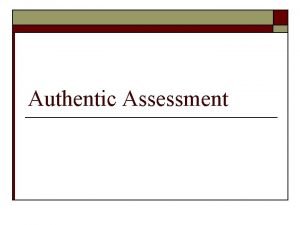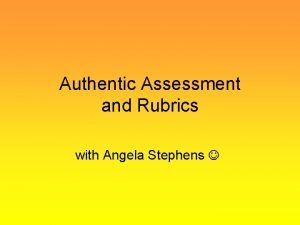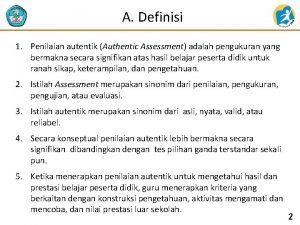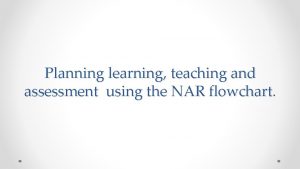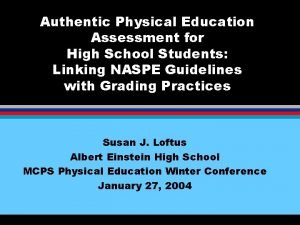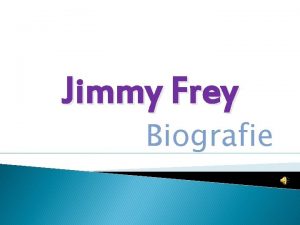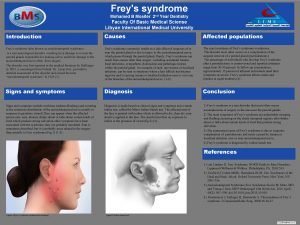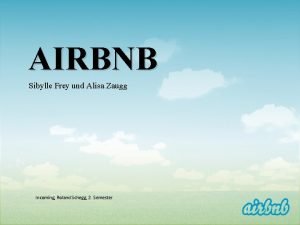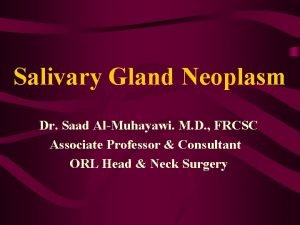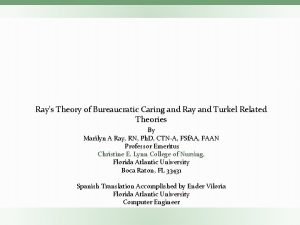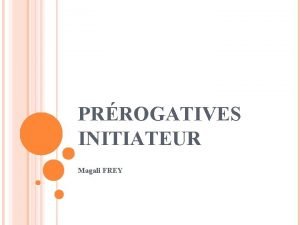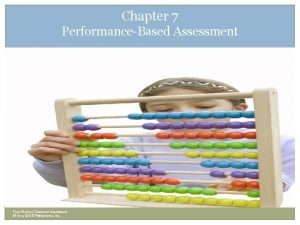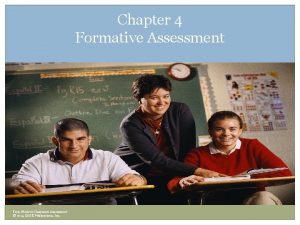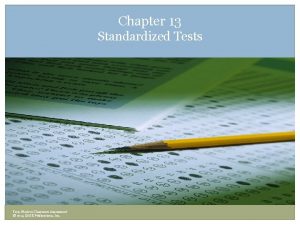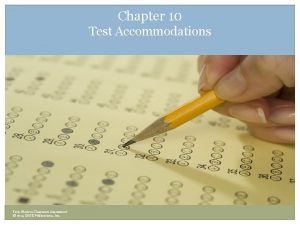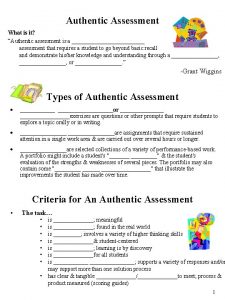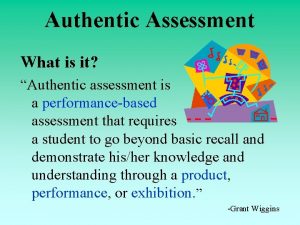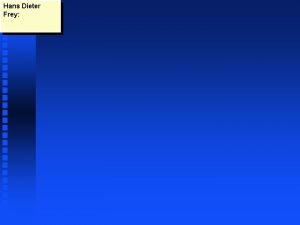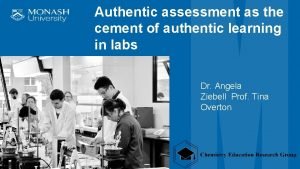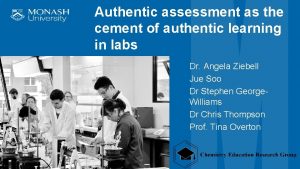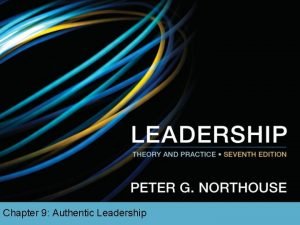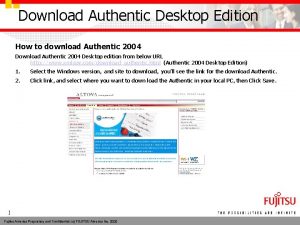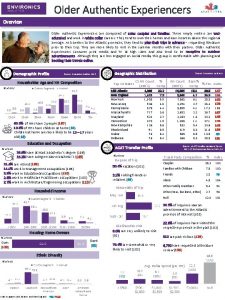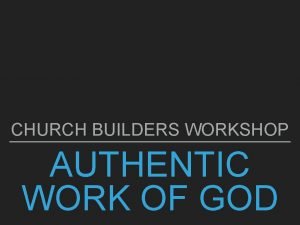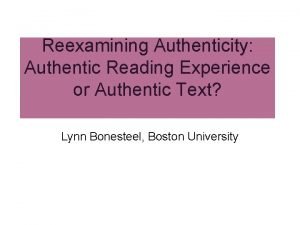Chapter 8 Authentic Assessment Frey Modern Classroom Assessment















- Slides: 15

Chapter 8 Authentic Assessment Frey, Modern Classroom Assessment © 2014 SAGE Publications, Inc.

Objectives The learner will be able to: • Identify the characteristics of assessment which make it authentic • Explain the reasons today’s teachers wish to make their assessments authentic • Design authentic assessments which can be scored fairly and objectively • Identify authentic assessment tasks for different populations and subject areas • Describe what a school-wide approach to authentic assessment might look like Frey, Modern Classroom Assessment © 2014 SAGE Publications, Inc.

Performance Assessment and Authentic Assessment Performance-based assessments - require examinees to perform, or produce something for evaluation which is intended to assess skill or ability Authentic assessments - align with real-world tasks and expectations Frey, Modern Classroom Assessment © 2014 SAGE Publications, Inc.

Some Definitions of What Constitutes “Realistic": Have meaning or value beyond success in school The situational or contextual realism of the proposed tasks Extent to which it can be applied outside the classroom Frey, Modern Classroom Assessment © 2014 SAGE Publications, Inc.

Nine Characteristics of Authentic Assessment (The context of the assessment) 1. Realistic activity or context 2. The task is performance-based. 3. The task is cognitively complex. Frey, Modern Classroom Assessment © 2014 SAGE Publications, Inc.

Nine Characteristics of Authentic Assessment (The role of the student) 4. A defense of the answer or product is required. 5. The assessment is formative. 6. Students collaborate with each other or with the teacher Frey, Modern Classroom Assessment © 2014 SAGE Publications, Inc.

Nine Characteristics of Authentic Assessment (The scoring) 7. The scoring criteria are known or student developed. 8. Multiple indicators or portfolios are used for scoring 9. The performance expectation is mastery. Frey, Modern Classroom Assessment © 2014 SAGE Publications, Inc.

Strengths of Authentic Assessment Focus on higher-order thinking skills, problem- solving, investigation and analysis Can drive improved teaching and curriculum coverage May enhance validity when layered with performance-based, formative, and traditional assessment Frey, Modern Classroom Assessment © 2014 SAGE Publications, Inc.

Ways Authentic Assessment Might Influence Student Learning: May stimulate a "deep study" approach leading to greater understanding and skill development May increase student motivation since tasks are seen as relevant and useful Frey, Modern Classroom Assessment © 2014 SAGE Publications, Inc.

Multi-Step Process for Producing Scoring Rules for Authentic Assessment: Design a scoring rubric for each criterion. Verify that task will provide all information necessary to produce valid score. Consider modifying task to increase interest or amount of information produced. Include on the rubric the task, objective, and complex thinking skill required. Consider assigning different weights to each criterion if they differ in importance. Share criteria with students. Share results with students. Frey, Modern Classroom Assessment © 2014 SAGE Publications, Inc.

Authentic Assessment and Young Children The emphasis should be on the developmental skills supportive of future learning. Teacher assumes role of mentor, with child as novice Student and teacher share experiences from outside the classroom Teacher incorporates children's interests into classroom activities and assessments Learning is understood as being partly social and emotional Frey, Modern Classroom Assessment © 2014 SAGE Publications, Inc.

Observable Characteristics that Distinguish Authentic Assessment in Practice from other Approaches: Assessment tasks are representative of the "field" Carefully designed standards of performance evaluation the essential qualities of performance Students play a role in evaluating their own work Students frequently present their work "publicly" Frey, Modern Classroom Assessment © 2014 SAGE Publications, Inc.

Frey, Modern Classroom Assessment © 2014 SAGE Publications, Inc.

Things to Think About 1. 2. 3. 4. 5. Think about the word “realistic. ” What would a realistic classroom assessment actually be like? When would it be important to design authentic assessments in the classroom? When would it not be as important? How does authenticity in assessment change as the context changes? Which aspects of authenticity (those nine dimensions) seem to you to be most important? What would a school dedicated to authentic assessment principles look like? Frey, Modern Classroom Assessment © 2014 SAGE Publications, Inc.

Key Points Applying authentic assessment procedures in the real classroom can be challenging. Through the community of classroom assessment scholars agree that authentic assessments are potentially a powerful, transformative tool, there is not yet agreement on which aspects of authenticity are most important. Nine different dimensions of authenticity were presented, with the realistic nature of the assessment being emphasized. The overlap between the modern assessment approaches of authentic, formative and performance-based was discussed. Validity and reliability issues of authentic assessment include determining what is authentic and the necessarily subjective nature of the scoring. General strategies for operationalizing authenticity and illustrations of authentic assessment tasks and scoring methods were provided for literacy and reading, mathematics, visual arts and other content areas and purposes. A scoring rubric for determining how authentic a particular assessment is was provided. Frey, Modern Classroom Assessment © 2014 SAGE Publications, Inc.
 Alternative names for authentic assessment
Alternative names for authentic assessment Authentic assessment rubric
Authentic assessment rubric Autentik assessment adalah
Autentik assessment adalah Authentic assessment
Authentic assessment Authentic assessment
Authentic assessment Authentic assessment
Authentic assessment Authentic assessment in physical education
Authentic assessment in physical education Smart classroom vs traditional classroom
Smart classroom vs traditional classroom Jimmy frey wikipedia
Jimmy frey wikipedia Jimmy frey woonplaats
Jimmy frey woonplaats Frey syndrome symptoms
Frey syndrome symptoms Airbnb mehrwertsteuer
Airbnb mehrwertsteuer Klaus dieter frey
Klaus dieter frey Frey’s syndrome
Frey’s syndrome Marilyn anne ray theory
Marilyn anne ray theory Magalie frey
Magalie frey
